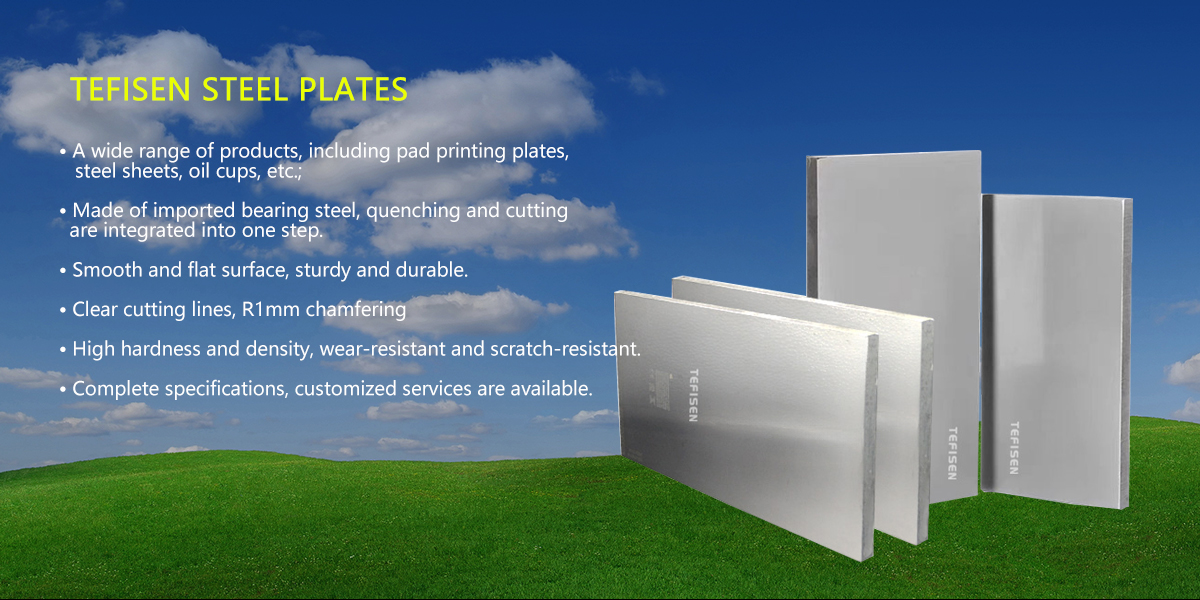Eight-Step Rule for Making Pad Printing Cliché
In the printing industry, especially in the field of special printing, pad printing cliché are indispensable consumable materials for pad printing machines. Their quality and performance are directly related to the quality and production efficiency of printed products. Guangdong TEFISEN Technology Co., Ltd., as a professional printing auxiliary material manufacturer, has its own strict standards and processes for pad printing plate production, which we call the eight-step rule.

I: Material Selection
Selecting suitable pad printing cliché is the first step to ensure printing quality. When selecting, we first consider the requirements of the printed product, such as wear resistance, corrosion resistance, and hardness. Secondly, we consider the processing performance of the steel plate, such as cutting performance and polishing performance.
Pad printing cliché are mainly divided into several categories based on their materials and properties, such as chrome steel, K460 steel, bearing steel, and spring steel. Among them, bearing steel plates have good wear resistance and processing performance, fine and uniform organizational structure, and good corrosion resistance, making them the preferred steel for pad printing cliché. Guangdong TEFISEN Technology Co., Ltd., as a manufacturer of printing auxiliary materials, uses high-quality bearing steel as the basic processing material to control quality from the source.
II: Cutting and Processing
According to the model of the pad printing machine and printing requirements, the bearing steel is cut into suitable sizes and undergoes necessary processing such as polishing and grinding to ensure the flatness and smoothness of the steel plate surface. Common sizes include 400x500mm and 480x600mm, which are suitable for medium or larger printing projects.
III: Applying Photosensitive Paste (A Key Step in Pad Printing Plate Production)
1. In the production process of pad printing cliché
applying photosensitive paste is a crucial step that directly affects the subsequent exposure, development, and etching effects, thereby determining the quality of the pad printing plate. The following are the specific requirements for applying photosensitive paste:
2. Quality of Photosensitive Paste:
Use high-quality photosensitive paste to ensure good photosensitivity and stability. The photosensitive paste should have high resolution to clearly reflect the details of the design pattern.
3. Application of Photosensitive Paste:
When applying the photosensitive paste, ensure that it is evenly distributed on the steel plate surface to avoid uneven phenomena such as bubbles and flow marks. Use professional paste application equipment or tools, such as scrapers and rollers, to ensure uniform and consistent application.
4. Drying of Photosensitive Paste:
After applying the photosensitive paste, place it in a dark place to dry naturally, avoiding direct sunlight or high-temperature baking. During the drying process, ensure that the steel plate surface is dust-free and impurity-free to avoid affecting the curing effect of the photosensitive paste.
5. Leveling of Photosensitive Paste:
When applying the photosensitive paste, pay attention to its leveling property to ensure that it forms a uniform and smooth film layer on the steel plate surface. If the leveling property of the photosensitive paste is poor, it may easily lead to uneven exposure, blurred patterns, and other issues.
6. Pre-treatment before Exposure:
Before exposure, ensure that the steel plate surface is completely dry and dust-free. If necessary, perform slight grinding or polishing on the steel plate to improve its surface smoothness and flatness.
7. Dosage of Photosensitive Paste:
Reasonably control the amount of photosensitive paste based on the size of the steel plate, the complexity of the design pattern, and the performance of the photosensitive paste. Excessive photosensitive paste will increase the difficulty of exposure and development, while too little may result in incomplete or blurred patterns.
8. Precautions:
When applying the photosensitive paste, avoid dust or impurities falling on the steel plate surface, which will affect the exposure and development effects. After applying the photosensitive paste, store the steel plate in a dark place to avoid premature curing of the photosensitive paste due to natural light exposure.
IV. Exposure:
Place the steel plate coated with photosensitive paste into the exposure machine and expose it to ultraviolet light to harden the paste. The exposure time and intensity need to be adjusted based on the actual situation.
V. Development:
Put the exposed steel plate into the developer solution to remove the unhardened photosensitive paste, allowing the design pattern to be revealed on the steel plate.
VI: Etching
Etching is a crucial step in etching the design pattern onto the steel plate. In this step, we use special etchants such as ferric chloride and nitric acid. The concentration, temperature, and etching time of the etchant need to be strictly controlled.
VII: Corrosion
Corrosion is a crucial step in etching the design pattern onto the steel plate. In this step, we use specialized corrosive agents such as ferric chloride and nitric acid. The concentration, temperature, and corrosion time of the corrosive agent need to be strictly controlled.
1. Selection of Corrosive Agent:
We generally adopt ferric chloride as the corrosive agent due to its good corrosive effect and stability.
2. Control of Concentration:
The concentration of the corrosive agent directly affects the corrosion speed and effect. We adjust the concentration of the corrosive agent based on the material of the steel plate and the complexity of the pattern. Generally speaking, a concentration of 20% to 40% is suitable.
3. Control of Temperature:
The corrosion temperature is also an important factor affecting the corrosion effect. Too high or too low temperatures will affect the corrosion speed and uniformity. We usually control the temperature of the corrosive solution between 20 and 30 degrees Celsius.
4. Control of Corrosion Time:
The length of the corrosion time determines the depth of corrosion on the steel plate and the fineness of the pattern. We precisely control the corrosion time based on the complexity of the pattern and the properties of the corrosive agent. Generally speaking, the corrosion time ranges from several minutes to tens of minutes.
VIII : Cleaning and Drying:
After corrosion, the steel plate is cleaned and dried to remove residual corrosive liquid and impurities.
Key Inspection Items
• During the process of making a pad printing plate, strict inspection and control are required for each step. Key inspection items include:
• Steel plate size and thickness: Ensure that the steel plate size and thickness meet the requirements of the pad printing machine.
• Surface quality of the steel plate: Check whether the steel plate surface is flat, smooth, and free from scratches, pits, and other defects.
• Uniformity of photosensitive paste application: Ensure that the photosensitive paste is applied evenly, without bubbles, streaks, or other phenomena.
• Exposure effect: Check whether the pattern on the exposed steel plate is clear, complete, and free from blurring, missing parts, or other issues.
• Corrosion effect: Check whether the pattern on the corroded steel plate is accurate, fine, and free from excessive or insufficient corrosion.
The above is the seven-step rule for making pad printing cliché. Through strict inspection and control, TEFISEN Company is able to produce high-quality and stable pad printing cliché that meet customer needs. Welcome to inquire. The consultation phone number is 0752-3296 999!

